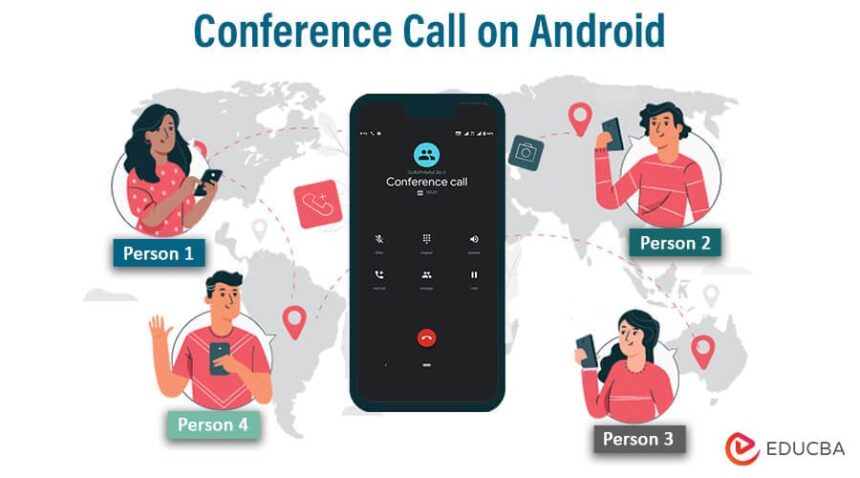Staying connected doesn’t always require Wi-Fi or mobile data. Whether you’re hosting a quick team meeting, a family check-in, or a community discussion, you can create a multi-person conference call using only your phone’s regular voice network.
Below is a clear, user-friendly walkthrough, plus essential tips and answers to common questions, so you can set up a conference call without touching the internet.
Why Go Offline for Conference Calls?
Not everyone has access to a reliable data connection, and even in well-connected areas, internet-based services like Zoom or WhatsApp can be disrupted by power outages, bandwidth congestion, or app restrictions.
Relying on the regular voice network of your mobile carrier or a landline eliminates these concerns. Calls placed over the cellular voice network typically have lower latency and are less prone to sudden drops compared to internet calls, making them especially useful in regions with patchy mobile data coverage.
They also reduce the strain on your phone battery because the hardware doesn’t need to maintain an active data connection during the call.
Use Your Smartphone’s Built-in Calling Feature
Most modern smartphones let you merge several calls into a single conversation through your mobile carrier’s network. This option is ideal when you need to set up a quick group discussion without extra apps.
Start the first call: open your phone dialer, choose the first participant from your contacts or manually enter their number, and place the call. Wait until they pick up and confirm they’re ready to join a conference.
Add another person: on your call screen, look for an “Add Call” button, often marked with a + sign or labeled Add. Tap it, which will put the first call on hold while you dial the second participant. This step temporarily creates two separate calls.
Merge the calls: once the second participant answers, you’ll see an option to Merge Calls or Conference. Tap it to combine everyone into a single conversation. Both parties will now hear each other and can speak freely.
Repeat as needed: to include more people, repeat the add-and-merge process. Each time you add someone, the phone will briefly place the ongoing conference on hold while you dial the next participant.
Check carrier limits: mobile carriers determine how many participants you can include, usually three to six. Some business or enterprise plans offer larger capacities, so if you regularly need bigger conferences, ask your provider about upgrading your plan.
If you’re using Wi-Fi Calling or Voice over LTE (VoLTE), temporarily disable these features. Certain networks restrict conference functionality when those services are active, which can lead to connection failures or audio issues.
Try a Landline Teleconferencing Service
If you prefer a traditional phone line, or need to include people without mobile phones, landline-based conference services provide a dependable and often more scalable alternative.
Choose a provider: platforms such as FreeConferenceCall.com, UberConference (dial-in option), or similar services allow you to set up a dedicated conference bridge that participants can dial into from any standard phone. These services are specifically designed for multi-party audio meetings and can handle larger groups than typical mobile carriers.
Create an account: you’ll usually need to sign up online once to get a unique dial-in number and passcode. It’s wise to complete this initial setup ahead of time when you do have internet access so everything is ready before your meeting.
Share details with participants: provide each participant with the dial-in number, access code, and scheduled time. This ensures everyone knows exactly when and how to join.
Start the meeting: at the agreed time, dial the provided number, enter the access code, and wait for others to join. The service automatically merges all callers into one line. Many platforms also allow you to enable optional features like call recording, participant muting, or waiting rooms for added control.
Because the call travels entirely over the traditional phone network, no participant needs a smartphone or mobile data, making it ideal for guests in areas with unreliable connectivity.
Key Considerations for a Smooth Call
Signal strength: a strong cellular signal is critical. If you’re hosting, move to a location with at least three or four bars of service before dialing, or use a landline for maximum stability.
Battery life: conference calls often last longer than single calls, and continuous audio transmission can drain your phone quickly. Keep a charger or power bank nearby to avoid an abrupt disconnection.
Privacy: everyone on the line can hear each other. Remind participants that the conversation is not private and to speak only when it’s their turn to avoid crosstalk.
Cost: because these calls use your regular voice network, they count toward your plan’s voice minutes. Check your plan’s limits and whether participants might incur long-distance fees, especially when using a toll-based conference service.
Etiquette: encourage participants to mute their microphones when not speaking, speak clearly, and avoid interrupting. This keeps the conversation organized and prevents background noise from disrupting the call.
By understanding these detailed methods and considerations, you can confidently organize group conversations anytime, even when the internet isn’t an option.
Frequently Asked Questions (FAQs) About Conference Call Without Internet
How many people can I add to a cellular conference call?
It depends on your carrier and plan. Most support 3–6 participants, though some business plans allow more.
Can I record a conference call without internet?
Many smartphones have built-in voice recorders, but laws vary by region. Always inform participants before recording.
Does the call use my mobile data?
No. Traditional conference calls use your voice network, counting only toward your voice minutes.
What if someone drops off the call?
You can redial and merge them back in. If the host disconnects, the entire call may end.
Are there extra charges for landline teleconferencing services?
Many are free apart from your carrier’s normal calling rates. Check if the dial-in number is long-distance for any participants.





